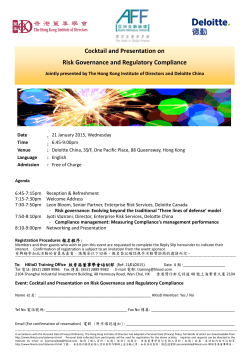
RDI sector to receive EUR 2200 in 2014-2020
RDI sector to receive EUR 2200 in 2014-2020 Hungary has pledged to increase spending on R&D-related projects to 1.8 percent of GDP until 2020, while in 2012 1.3 percent of GDP was disbursed for the same purpose. Hungary’s economic policy aims to close the gap with world leaders in the long term: with countries which devote 3 percent of GDP on research and development. The below table shows countries about which the World Bank database already contains the latest data for 2012. A Deloitte survey published in spring 20141 indicates that the majority of participating enterprises does not expect a significant change in R&D spending, neither in the short nor in the long term. While the share of respondents expecting higher R&D spending over the next 3-5 years was 45.8 percent in 2013, it was 48.9 percent this year. Therefore, it is worth highlighting that in the EU fiscal period 2014-2020 Hungary’s new institutional system will place special emphasis on elaborating regulation on corporate R&D activities in order to support related projects. As a result of the implementation of the RDI objectives of the EU2020 strategy, 3 percent of the EU’s GDP will be spent on RDI and this shall be realized in close cooperation with the private sector. Currently, the largest obstacle to Corporate R&D Report 2014 http://www2.deloitte.com/content/dam/Deloitte/hu/Documents/tax/HU-CE- 1 RD-Hungary-hun-2014.pdf Page: 1 / 3 reaching and exploiting scientific achievements in Hungary is insufficient funding. The successful utilization of EU resources may remedy this issue in 2014-2020. Within the Economic Development and Innovation Operative Programme (GINOP), funding of more than EUR 1600 million has been earmarked as non-refundable grants. In addition to that, refundable resources exceeding EUR 600 million will also be announced in the coming fiscal period. As the threequarters of Hungary’s RDI capacities – the number of researchers and research centres -- is concentrated in Budapest, the funding made available for less developed regions shall be utilized in a way to benefit the research network of Budapest as well. Decisions of the operative programme are based on S3 (Smart Specialization Strategy) which identifies prioritized fields within RDI. In the next seven years, projects which are in accordance with S3 objectives or prioritized fields will receive funding. GINOP also aims to stimulate corporate R&I activity, support strategic R&I partnerships and initiatives and bolster R&I infrastructure and capacities to reach excellence on a global scale. The beneficiaries of these goals are mainly SMEs with R&I activities, large enterprises, state-funded and non-profit research centres. Along with non-refundable funds, enterprises active in this field may also receive refundable resources: funding aimed at stimulating corporate R&I projects totals more than HUF 200bn in the form of various financial instruments. From the aspect of the national economy, promoting strategic cooperation between researchers and improving the quality of these is of primary importance as these provide opportunity for establishing and deepening new strategic partnerships. Besides improving financial conditions, supporting human resources is another crucial element of the programme. In order to make Hungary more attractive as a research hub, it is necessary to establish and/or attract research centres that are capable of achieving excellent results on a global scale. This is exactly the objective of one of the key GINOP projects, ELI (Extreme Light Infrastructure) of Szeged. ELI will be the very first facility in the world which provides light sources within an extremely broad frequency range in the form of ultra-short pulses with high repetition rate, even within so-called ultra-relativistic sphere. Thus new prospects will open in physics that may be the basis for new technology development projects such as relativistic micro-electronics or compact (table-sized) laser particle accelerators. The successful implementation of the project is also Page: 2 / 3 expected to boost the number of students and researchers and in turn to better integrate Hungary into the top leagues of science. Page: 3 / 3
© Copyright 2025





















